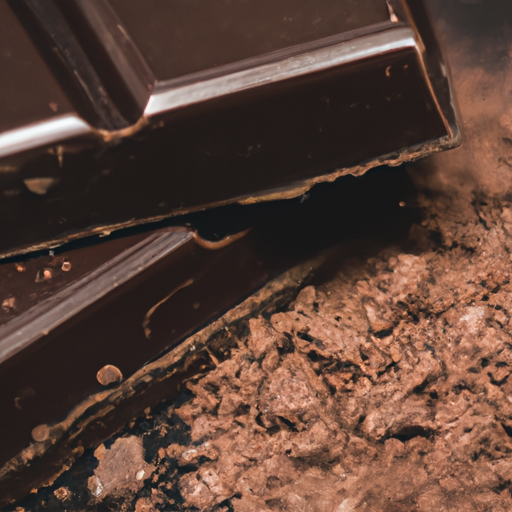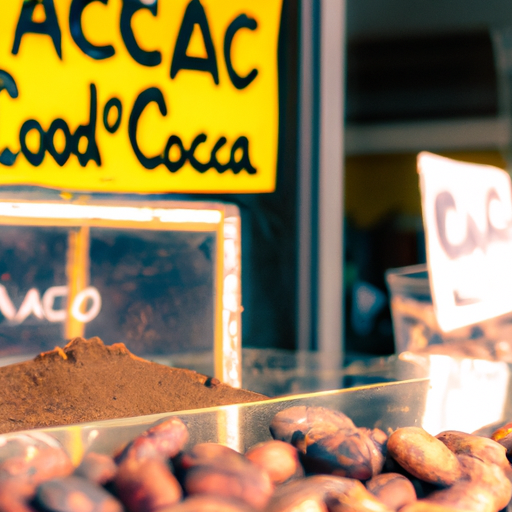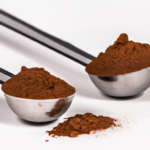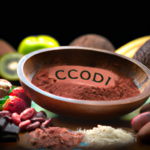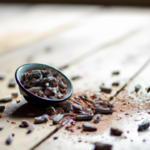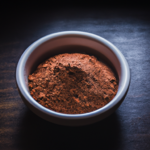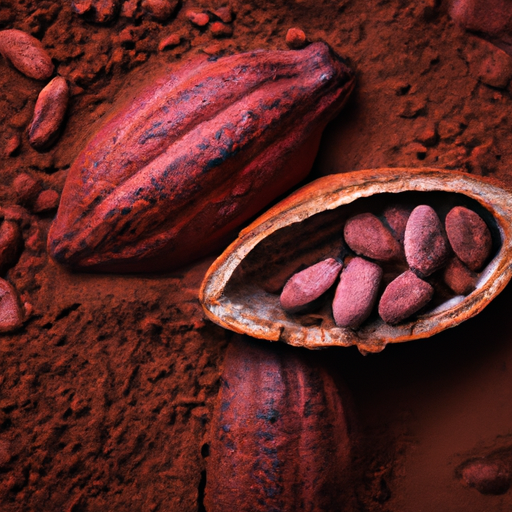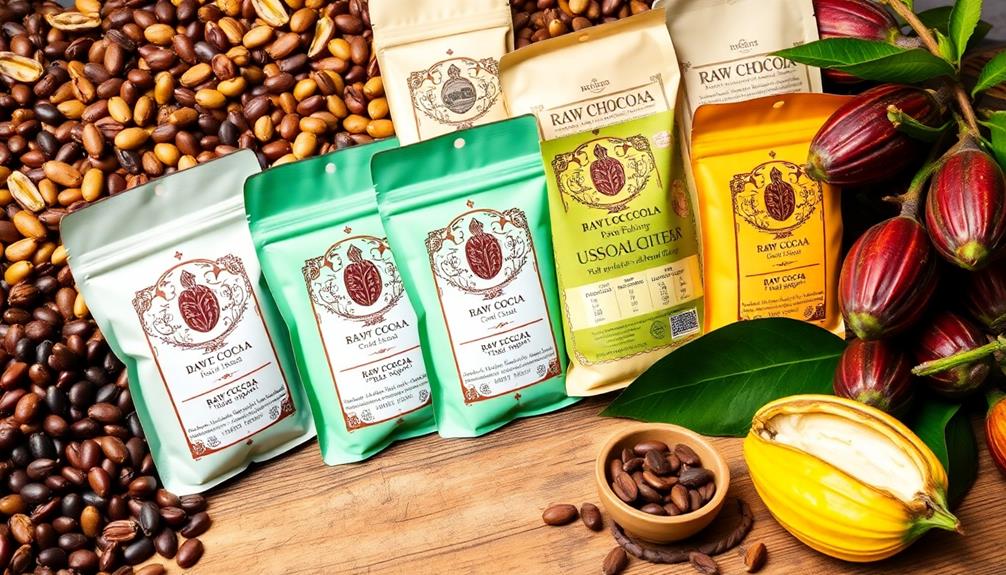In this article, I will investigate the amount of raw cacao that is considered safe for consumption, with the goal of finding a healthy balance between enjoying its benefits and minimizing any possible risks. By learning about recommended serving sizes, nutritional value, and the significance of moderation, we can intelligently decide how to include raw cacao in our diets.
Additionally, I will discuss the importance of quality and sourcing, as well as provide recipes, storage tips, and alternatives to explore. Remember, while raw cacao can be a delightful addition to our lives, it’s always wise to consult with a healthcare professional for personalized advice.
Let’s dive into the world of raw cacao and uncover its secrets together.
Key Takeaways
- Raw cacao can be safely consumed in moderation for optimal health benefits.
- Excessive consumption of raw cacao may have potential risks, such as increased heart rate and disrupted sleep.
- It is important to consult a healthcare professional for personalized advice on raw cacao consumption, especially if taking medications.
- Proper storage conditions, such as storing raw cacao in a cool, dry place away from sunlight, should be followed to maintain its flavor and quality.
The Health Benefits of Raw Cacao
Did you know that raw cacao is packed with incredible health benefits?
Raw cacao is a superfood that contains a high concentration of antioxidants, which help protect our bodies from damage caused by free radicals. These antioxidants have been shown to have numerous health benefits, such as reducing inflammation, improving heart health, and boosting the immune system.
Additionally, raw cacao contains compounds that can enhance mood and promote feelings of well-being. Its natural compounds, such as phenylethylamine and anandamide, have been linked to increased serotonin levels and improved mood.
Understanding the benefits of raw cacao is just the first step in harnessing its potential.
In the subsequent section, we will explore serving sizes and nutritional content to help you make informed choices about incorporating raw cacao into your diet.
Understanding Serving Sizes and Nutritional Content
When it comes to raw cacao, it’s important to understand the recommended daily intake, the calorie and fat content, and the overall nutrient profile.
As an evidence-based nutritionist, I can tell you that the recommended daily intake of raw cacao is about 1 to 2 tablespoons. This amount ensures you can enjoy the health benefits without consuming excessive calories or fat.
In terms of its nutrient profile, raw cacao is rich in antioxidants, fiber, iron, and magnesium, making it a nutritious addition to your diet.
Recommended Daily Intake of Raw Cacao
The recommended daily intake of raw cacao is like a sweet treat for your health, providing a rich source of antioxidants and nutrients. Consuming raw cacao in moderation can offer various health benefits. Here are some important points to consider about the recommended serving size and potential health risks:
-
Recommended serving size: It’s generally recommended to consume raw cacao in small amounts, such as 1 to 2 tablespoons per day. This allows you to enjoy its benefits without overdoing it.
-
Antioxidant powerhouse: Raw cacao is packed with antioxidants, which help protect your cells from damage caused by free radicals. These antioxidants can contribute to overall health and well-being.
-
Nutrient-rich: Raw cacao is also a good source of essential minerals like magnesium, iron, and zinc.
Understanding the recommended daily intake of raw cacao is important to ensure you reap its benefits without going overboard.
Moving on to the next topic, let’s explore the calorie and fat content of raw cacao.
Calorie and Fat Content
Indulging in raw cacao can be a guilt-free pleasure. It is low in calories and fat, satisfying your sweet cravings without the extra guilt.
When considering calorie content, it’s important to also take into account the nutrient balance that raw cacao provides. While it does contain calories, it is rich in nutrients such as fiber, iron, magnesium, and antioxidants. These nutrients contribute to overall health and well-being.
In terms of impact on blood sugar levels, raw cacao has a low glycemic index. This means it doesn’t cause a rapid spike in blood sugar like some other sweet treats. It is a good option for those watching their blood sugar levels.
Moving on to the nutrient profile, raw cacao is packed with essential vitamins and minerals that support various bodily functions.
Nutrient Profile
Satisfy your sweet tooth guilt-free with the nutrient-rich profile of raw cacao. This superfood is packed with goodness, making it a healthier alternative to regular chocolate. Raw cacao is an excellent source of antioxidants, which help protect our cells from damage caused by free radicals. It also contains essential minerals like magnesium, iron, and zinc, all of which play important roles in our body’s functions.
When comparing nutrient profiles, raw cacao is a winner. It has more fiber, protein, and healthy fats compared to processed chocolate. The flavonoids in raw cacao have been linked to various health benefits, including improved heart health and reduced inflammation. Plus, it’s low in sugar and calories, making it a great option for those watching their weight.
However, it’s important to note that excessive consumption of raw cacao can have potential risks. Too much caffeine can cause jitteriness and disrupted sleep, and the high fiber content may lead to digestive issues. So, while raw cacao offers numerous health benefits, moderation is key.
Potential Risks of Excessive Consumption
When it comes to excessive consumption of raw cacao, there are a few potential risks to be aware of.
Firstly, raw cacao contains caffeine and theobromine, which are stimulants that can increase heart rate and cause sleep disturbances if consumed in large amounts.
Secondly, some individuals may experience gastrointestinal issues such as stomach upset or diarrhea due to the high fiber content in raw cacao.
Lastly, it’s important to note that raw cacao may interact with certain medications, such as those used to treat high blood pressure or anxiety, potentially causing adverse effects.
Caffeine and Theobromine Content
The amount of raw cacao you consume determines the levels of caffeine and theobromine you’ll enjoy. Caffeine, a stimulant found in cacao, can affect individuals differently depending on their caffeine sensitivity. Some people may experience increased alertness and energy, while others may feel jittery or have trouble sleeping.
Theobromine, another compound in cacao, is metabolized differently than caffeine and has a milder stimulant effect. It can promote feelings of relaxation and even improve mood. However, consuming excessive amounts of raw cacao can lead to higher levels of caffeine and theobromine in your system, potentially increasing the risk of adverse effects such as gastrointestinal issues.
It is important to be mindful of your consumption and listen to your body’s signals to ensure a safe and enjoyable experience.
Gastrointestinal Issues
Be cautious with how you indulge in the velvety richness of raw cacao. Excessive consumption may lead to an upset stomach or other gastrointestinal discomfort.
Gastrointestinal issues can arise due to the high fiber content of raw cacao. This high fiber content can be difficult for some individuals to digest.
In addition to the high fiber content, raw cacao contains natural compounds that stimulate the production of stomach acid. This can cause heartburn or acid reflux in sensitive individuals.
To avoid these digestive problems, it is recommended to consume raw cacao in moderation and listen to your body’s response. If you experience any gastrointestinal issues after consuming raw cacao, it is advisable to reduce your intake or consult a healthcare professional.
Moving forward, it is important to consider how raw cacao can interact with certain medications and their potential effects.
Interactions with Medications
When it comes to consuming raw cacao, it is important to consider the potential interactions it may have with medications. Raw cacao contains certain compounds, such as theobromine and caffeine, which could interact with certain medications.
These interactions may either enhance or diminish the effects of the medications, leading to potential side effects or reduced efficacy. It is crucial to consult with a healthcare professional or pharmacist before consuming raw cacao if you are taking any medications. They can provide guidance on whether it is safe to consume raw cacao and if any adjustments need to be made to your medication regimen.
As with any substance, moderation is key to ensure optimal safety and minimize the risk of any adverse effects. Transitioning into the subsequent section about moderation, it is important to understand the importance of consuming raw cacao in moderation to avoid any potential complications.
Moderation is Key
Enjoy raw cacao in moderation, and you’ll find yourself savoring its rich flavors without overindulging. The importance of portion control cannot be emphasized enough when it comes to consuming raw cacao.
While it offers a range of health benefits, excessive intake may lead to potential side effects. It contains caffeine and theobromine, which can cause jitteriness, increased heart rate, and even insomnia in some individuals. Additionally, consuming large amounts of raw cacao may lead to digestive issues such as diarrhea or stomach cramps.
Therefore, it’s crucial to exercise moderation and be mindful of your consumption. As we explore the importance of quality and sourcing in the next section, it’s essential to consider not only the quantity but also the source of raw cacao to ensure a safe and enjoyable experience.
The Importance of Quality and Sourcing
When it comes to choosing raw cacao, I believe it’s important to consider the quality and sourcing. Opting for organic and fair trade options ensures that the cacao beans are grown without harmful pesticides and that the farmers are paid fair wages.
Additionally, choosing cacao that is free from contaminants and additives is crucial for our health.
Lastly, supporting sustainable farming practices helps protect the environment and ensures the longevity of cacao production for future generations.
Organic and Fair Trade Options
When it comes to organic and fair trade options, raw cacao is a great choice. Organic farming guarantees that the cacao beans are grown without synthetic fertilizers, pesticides, or genetically modified organisms. This not only benefits the environment but also ensures that the final product is free from harmful chemicals.
Ethical sourcing is another crucial aspect of organic and fair trade options. Fair trade practices ensure that farmers are paid a fair price for their produce and work under safe conditions. By choosing organic and fair trade options, you can support sustainable farming practices and contribute to the well-being of farmers and the environment.
Quality and sourcing are key factors to consider when it comes to raw cacao. Now, let’s explore how to avoid contaminants and additives in raw cacao.
Avoiding Contaminants and Additives
When it comes to choosing organic and fair trade options for raw cacao, it is also important to consider the potential contaminants and additives that may be present. To ensure the safety of the product, it is crucial to avoid cacao that has been exposed to pesticides and heavy metals. These harmful substances can pose serious health risks when consumed in high quantities. By sourcing from sustainable farms, you can minimize the chances of contamination and support environmentally friendly practices. Additionally, opting for raw cacao that is free from additives and artificial ingredients ensures a purer and more natural product. To further emphasize the importance of these factors, consider the following table:
| Contaminants | Additives | Sustainable Farming |
|---|---|---|
| Pesticides | Artificial sweeteners | Organic certification |
| Heavy metals | Flavor enhancers | Fair trade certification |
| Preservatives | Environmental stewardship |
Supporting sustainable farming practices is not only beneficial for our health but also for the planet’s well-being.
Support Sustainable Farming Practices
Supporting sustainable farming practices is like planting seeds of hope for a greener future. By opting for raw cacao produced using sustainable farming methods, we can minimize the environmental impact of our choices.
Sustainable farming methods prioritize the health of the soil, water conservation, and biodiversity. These practices avoid the use of harmful chemicals and promote natural pest control methods. Additionally, sustainable farming helps to reduce greenhouse gas emissions and protect local ecosystems.
By supporting farmers who practice sustainable methods, we can contribute to the preservation of natural resources and the overall health of our planet. With these sustainable farming practices, we can enjoy raw cacao guilt-free, knowing that our indulgence is not harming the environment.
Transitioning into the next section about recipes and ideas for enjoying raw cacao, let’s explore some delightful ways to savor this delicious superfood.
Recipes and Ideas for Enjoying Raw Cacao
When it comes to enjoying raw cacao, there are plenty of delicious recipes and ideas to explore.
One option is to incorporate raw cacao into smoothies and shakes for a nutrient-packed and energizing treat.
For those with a sweet tooth, dessert and baking ideas using raw cacao can satisfy cravings while providing health benefits.
And if you’re looking for a quick and convenient snack, energy bar recipes featuring raw cacao can give you a boost of energy on the go.
Smoothie and Shake Recipes
Looking to add a healthy twist to your morning routine? Try out these delicious smoothie and shake recipes that will satisfy your cravings and keep you energized throughout the day!
Smoothies are a great way to incorporate raw cacao into your diet and reap its numerous health benefits. You can create various smoothie variations by combining raw cacao powder with fruits like bananas, berries, or mangoes, and adding a liquid base like almond milk or coconut water.
Raw cacao is rich in antioxidants, which can help boost your immune system and reduce inflammation. It also contains essential minerals like magnesium and iron, which promote heart health and support brain function. So, whip up a refreshing cacao smoothie and start your day on a healthy note.
Now, let’s move on to some mouthwatering dessert and baking ideas.
Dessert and Baking Ideas
After exploring various smoothie and shake recipes, it’s time to move on to dessert and baking ideas.
As someone who enjoys indulging in sweets, I’m excited to discover healthier alternatives that incorporate raw cacao. Raw cacao is not only delicious but also packed with antioxidants and essential minerals.
When it comes to dessert and baking, the possibilities are endless. From rich and decadent chocolate cakes to fudgy brownies and creamy mousse, raw cacao can elevate any dessert to new heights.
To make things even more interesting, I’ve compiled a list of flavor pairings that complement raw cacao perfectly: almond, coconut, raspberry, and mint. These combinations create a harmonious balance between sweetness and richness.
Now, let’s move on to the next section and explore some snack and energy bar recipes, where we can continue to enjoy the benefits of raw cacao.
Snack and Energy Bar Recipes
Get ready to satisfy your snack cravings with these delicious and energizing recipes for homemade snack and energy bars. Snack time just got a whole lot better with these nutritious treats that are packed with flavor and provide a much-needed energy boost.
Whether you’re looking for a quick pick-me-up during the day or a pre-workout snack, these recipes have got you covered.
From classic combinations like peanut butter and chocolate to unique flavors like cranberry and almond, there’s a snack bar recipe for everyone. These bars are not only tasty but also easy to make, requiring just a few simple ingredients that you probably already have in your pantry. Plus, they can be customized to suit your preferences, whether you prefer chewy or crunchy bars.
So, whip up a batch of these homemade snack bars and enjoy a tasty and nutritious snack whenever you need it.
Now, let’s move on to the next section and learn some tips for storing and preserving raw cacao.
Tips for Storing and Preserving Raw Cacao
When it comes to storing and preserving raw cacao, there are a few key points to keep in mind.
-
Store raw cacao in proper conditions, such as a cool, dry place away from direct sunlight. This will help maintain its freshness and prevent it from spoiling prematurely.
-
Be mindful of the shelf life and expiration dates of raw cacao. Consuming it after it has expired can lead to a diminished flavor and potential health risks.
-
Avoid moisture and contamination to preserve the quality of raw cacao. Store it in a sealed container and avoid exposing it to any liquids or contaminants.
Taking these tips into consideration will ensure that your raw cacao stays fresh and retains its quality for longer periods of time.
Proper Storage Conditions
To ensure the freshness and quality of your raw cacao, it’s essential to store it properly. The two most important factors to consider are the storage temperature and the packaging materials used. Raw cacao should be stored in a cool, dry place, away from direct sunlight and heat sources. A temperature between 60-70°F (15-21°C) is ideal for maintaining its flavor and texture. Additionally, it’s crucial to store raw cacao in an airtight container to prevent moisture and odors from affecting its taste. Using a resealable bag or airtight jar is recommended.
| Storage Temperature | Packaging Materials |
|---|---|
| 60-70°F (15-21°C) | Airtight container |
Following these storage conditions will help preserve the natural flavors and nutrients of raw cacao. Now let’s explore the next section about shelf life and expiration dates.
Shelf Life and Expiration Dates
Storing raw cacao properly is absolutely crucial for maintaining its freshness and quality, but what happens if you neglect to check its shelf life and expiration dates?
Raw cacao, like any other food product, has a limited shelf life. It is important to always check the expiration date on the packaging to ensure that you are consuming it within the recommended timeframe.
The shelf life of raw cacao can vary depending on factors such as how it is stored and the conditions it is exposed to. Generally, raw cacao can last for up to two years if stored in a cool, dry place away from direct sunlight and strong odors. However, it is always best to follow the expiration date provided by the manufacturer to guarantee its freshness.
By being aware of the shelf life and expiration dates of raw cacao, you can ensure that you are consuming it at its best quality.
Now, let’s move on to the next section about avoiding moisture and contamination.
Avoiding Moisture and Contamination
Keep your raw cacao in a dry, airtight container to prevent moisture and contamination. Moisture can cause the cacao to become clumpy and lose its flavor, while contamination can introduce harmful bacteria or mold. To ensure the longevity and quality of your raw cacao, it is important to follow proper storage practices. Here is a table outlining some tips for moisture prevention and contamination control:
| Moisture Prevention | Contamination Control |
|---|---|
| Store in a cool, dry place | Keep away from strong odors |
| Avoid exposing to direct sunlight | Use clean utensils when handling |
| Seal the container tightly after each use | Check for any signs of mold or pests |
| Avoid storing near humid areas | Purchase from reputable sources |
By implementing these measures, you can safeguard your raw cacao and enjoy its rich flavors for a longer period. Now, let’s explore other forms of cacao to broaden our culinary horizons.
Other Forms of Cacao to Explore
When it comes to exploring other forms of cacao, there are a few key options to consider.
Cacao nibs and powder are popular choices, offering a rich and intense chocolate flavor.
Cacao butter and paste provide a smoother and creamier texture, making them ideal for baking and creating desserts.
And for those looking for a convenient way to incorporate cacao into their daily routine, cacao supplements and extracts offer a concentrated dose of its health benefits.
Cacao Nibs and Powder
Nibble on nourishing nibs and savor the sensational sweetness of cacao powder. Cacao nibs and powder are versatile additions to various recipes and offer numerous health benefits. Here are five reasons why you should consider incorporating them into your diet:
- Cacao nibs are packed with antioxidants, which help fight free radicals and boost overall health.
- Adding cacao powder to your smoothies can enhance the flavor while providing a natural energy boost.
- Cacao nibs and powder are high in fiber, promoting a healthy digestive system.
- They contain minerals like magnesium and iron, which play essential roles in maintaining optimal bodily functions.
- Cacao can elevate your mood and improve cognitive function due to its content of theobromine and phenylethylamine.
Now, let’s explore the benefits of cacao butter and paste.
Cacao Butter and Paste
Indulge in the velvety smoothness of cacao butter and paste as they melt effortlessly in your mouth, adding a rich and creamy texture to your favorite desserts and treats.
Cacao butter, also known as theobroma oil, is derived from the cacao bean. It is often used in various cacao butter recipes and is praised for its high content of healthy fats, vitamins, and minerals. This makes it a nutritious addition to any diet.
On the other hand, cacao paste is made by grinding cacao beans into a smooth and glossy texture. It retains more of the natural oils and flavors of the cacao bean, providing a more intense and authentic chocolate taste.
Both cacao butter and paste offer a range of benefits, such as promoting cardiovascular health and improving mood.
Moving forward to the next section about cacao supplements and extracts, let’s explore the various ways to incorporate cacao into our daily lives.
Cacao Supplements and Extracts
When it comes to exploring the world of cacao, there’s more than just cacao butter and paste. Cacao supplements and extracts are gaining popularity due to their potential health benefits. These supplements are derived from the cacao plant and are often rich in antioxidants and flavonoids, which can promote heart health and improve mood.
However, it’s important to consider the safety of these supplements. While cacao extract is generally considered safe for most people, it’s always best to consult with a healthcare professional before adding any new supplement to your routine. They can provide personalized guidance based on your individual health needs and help ensure that you are taking the appropriate dosage for your specific circumstances.
Consulting with a Healthcare Professional
Consulting with a healthcare professional is crucial when determining the appropriate amount of raw cacao that is safe for you and your specific health needs. They can assess your individual health status and provide personalized recommendations. It is important to discuss any alcohol consumption with your healthcare provider, as raw cacao may interact with alcohol. Additionally, some individuals may experience potential allergic reactions to cacao, so it is essential to identify any allergies or sensitivities with the help of a healthcare professional. They can advise on the appropriate dosage or whether it is safe for you to consume raw cacao at all. A healthcare professional can also provide guidance on potential side effects and any precautions you should take. Remember, always consult with a healthcare professional before making any changes to your diet or incorporating new supplements or extracts.
Frequently Asked Questions
Can raw cacao be safely consumed by pregnant women?
Raw cacao can be safely consumed by pregnant women in moderation. While it contains caffeine, the benefits of raw cacao during pregnancy, such as its high antioxidant content, outweigh the potential risks.
Is it safe to consume raw cacao if I have a history of heart disease?
Raw cacao can be consumed safely if you have a history of heart disease. Studies suggest that raw cacao may help lower cholesterol levels and reduce blood pressure, which can be beneficial for heart health.
Can raw cacao interact with certain medications?
Raw cacao can interact with certain medications, potentially causing side effects. It’s important to consult with a healthcare professional to determine if consuming raw cacao is safe for you, especially if you take medication.
How much raw cacao is safe for children to consume?
Children can safely consume small amounts of raw cacao, which offers numerous health benefits. It is rich in antioxidants, minerals, and vitamins. Incorporating raw cacao into recipes like smoothies or energy balls can be a nutritious and delicious option.
Are there any specific guidelines for incorporating raw cacao into a diabetes-friendly diet?
Incorporating raw cacao into a diabetes-friendly diet can be beneficial due to its potential health benefits for diabetes management. However, it is important to consult with a healthcare professional for specific guidelines.
Is There a Safe Daily Limit for Consuming Raw Cacao?
It is important to be mindful of your intake when it comes to consuming raw cacao. While there is no set daily limit, experts suggest sticking to around 2-4 cups of raw cacao to avoid potential side effects such as caffeine jitters or upset stomach. Moderation is key for enjoying its benefits.
Conclusion
In conclusion, raw cacao can offer numerous health benefits when consumed in moderation. Its rich antioxidant content can support heart health and improve mood. However, it is important to understand serving sizes and nutritional content to avoid excessive consumption.
Quality and sourcing play a crucial role in ensuring the safety and effectiveness of raw cacao. So, how can we enjoy the benefits of raw cacao without going overboard? By consulting with a healthcare professional and exploring delicious recipes and ideas, we can find the perfect balance for our individual needs.

